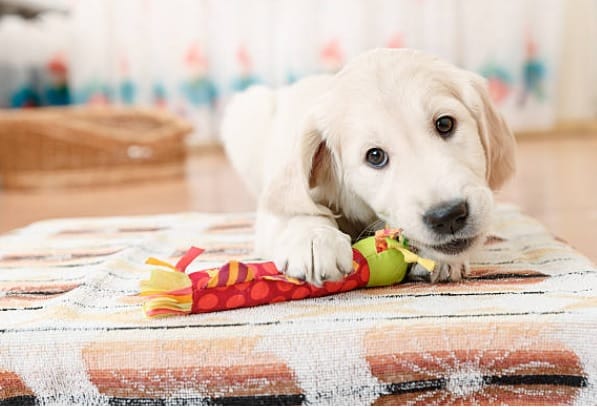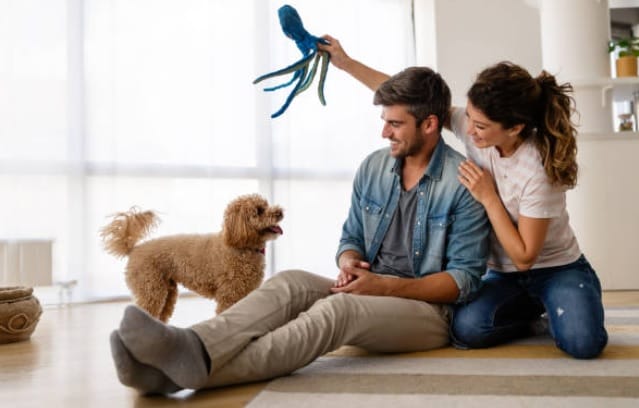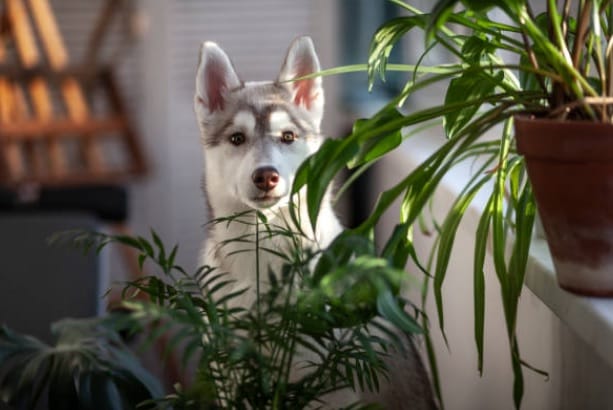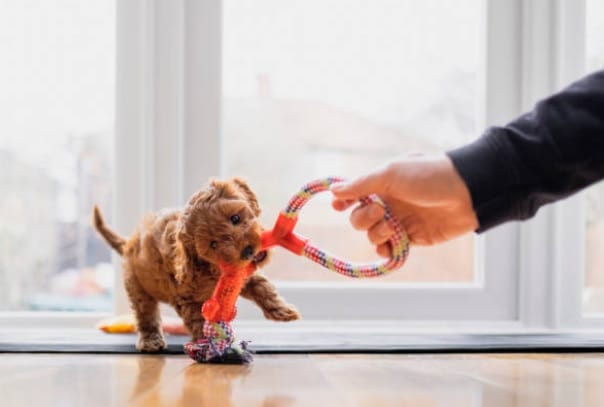How to Puppy Proof Your Home

How to Puppy Proof Your Home. The Ultimate Guide to Keeping Your Puppy Safe and Happy. Bringing a puppy home is one of the most exciting moments in any pet parent’s life. But let me tell you, puppies are curious, energetic, and sometimes downright mischievous little creatures. They’ll chew, sniff, and explore every inch of your home—and not always in the safest ways! So, before your furry friend arrives, let’s talk about how to puppy-proof your home and keep them safe while also protecting your belongings.
Why Puppy-Proofing is Essential
Puppies are like toddlers—they have no idea what’s dangerous, and they’ll try to taste or play with just about anything. From chewing on electrical cords to swallowing small objects, accidents can happen in the blink of an eye. Puppy-proofing isn’t just about preventing messes (though that’s a huge bonus!); it’s about creating a safe space where your puppy can learn, grow, and explore without unnecessary risks.
 1. Living Room Safety: Creating a Puppy-Friendly Space
1. Living Room Safety: Creating a Puppy-Friendly Space
Your living room is likely where you’ll spend a lot of time with your puppy, so it’s a great place to start your puppy-proofing mission.
- Hide Electrical Cords: Puppies love to chew, and cords are an easy target. Use cord covers or hide them behind furniture.
- Secure Fragile Items: Move breakables like vases or picture frames out of reach.
- Remove Small Objects: Coins, buttons, and even remote controls can pose a choking hazard.
- Create a Safe Zone: Set up a puppy pen or designate a corner with a comfy bed and toys.
Pro Tip: Get down to puppy-eye level and look around—if you see something they could grab or chew on, move it!
2. Kitchen Precautions: Avoiding Common Hazards
Ah, the kitchen—a treasure trove of smells and tastes for your puppy. But it’s also full of dangers.
- Store Food Securely: Puppies are notorious for sniffing out snacks, but some human foods (like chocolate, grapes, and onions) are toxic.
- Secure Trash Cans: Use a bin with a locking lid to prevent curious noses from diving in.
- Keep Cleaning Supplies Out of Reach: Store chemicals and detergents in locked cabinets.
A puppy-safe kitchen isn’t just about safety—it’s about avoiding those “oh no, what did you eat?!” moments.
3. Bathroom Safety: Hidden Dangers to Watch Out For
Bathrooms might not seem like puppy hotspots, but they’re full of interesting smells and potential dangers.
- Keep the Toilet Lid Closed: Puppies might try to drink from the bowl, which can be unsanitary and unsafe.
- Store Medications Safely: Keep pills and toiletries in secure cabinets.
- Pick Up Bath Mats and Towels: Puppies love chewing on soft fabrics.
It’s a small room, but it’s worth double-checking before letting your pup roam free.
4. Bedroom Protection: Keep Belongings Out of Reach
Bedrooms can be cozy havens for your puppy, but they also contain plenty of temptations.
- Shoes and Clothing: Keep these out of reach—chewing on shoes might be cute until your favorite pair is destroyed.
- Jewelry and Accessories: Small items like earrings or hair ties can be choking hazards.
- Under the Bed: Puppies love to hide under beds, so make sure there’s nothing dangerous stashed away.
Your puppy will likely spend time lounging in your room, so make sure it’s a safe space.
 5. Outdoor Spaces: Securing Your Yard for Puppy Adventures
5. Outdoor Spaces: Securing Your Yard for Puppy Adventures
If you have a yard, it can be a paradise for your puppy—but only if it’s safe.
- Secure Fences and Gates: Make sure there are no escape routes.
- Remove Toxic Plants: Some common plants can be poisonous to dogs.
- Provide Shade and Water: Puppies can overheat quickly, so make sure they have a cool spot to relax.
Always supervise outdoor playtime until you’re confident your yard is fully puppy-proof.
6. Electrical and Tech Safety: Preventing Chewing Accidents
Tech gadgets and electrical setups can be incredibly tempting for a puppy.
- Cover or Hide Cords: Use protective covers or route cables out of reach.
- Unplug Devices When Not in Use: Fewer plugged-in devices mean fewer hazards.
- Use Outlet Covers: Just like with toddlers, outlet covers are a smart investment.
A little preparation here can prevent a lot of headaches (and costly repairs!).
7. Training and Supervision: Key to a Safe Environment
No matter how well you puppy-proof your home, supervision is still key.
- Teach Commands: “Leave it” and “Drop it” are lifesavers.
- Supervise Playtime: Keep an eye on your puppy, especially in new spaces.
- Use Positive Reinforcement: Reward good behavior with treats and praise.
Puppies are fast learners, and consistency is your best friend.
8. Puppy Essentials: Must-Have Items for a Safe Space
Every puppy needs their own set of essentials to stay safe and happy:
- Chew toys (to redirect chewing away from furniture)
- Puppy gate or playpen
- Comfortable bed
- Food and water bowls
- Puppy-safe cleaning supplies (because accidents happen!)
 Conclusion: A Happy and Safe Home for Your Puppy
Conclusion: A Happy and Safe Home for Your Puppy
Puppy-proofing your home isn’t just a one-time task—it’s an ongoing process as your puppy grows, learns, and explores. With a little preparation and a lot of patience, you’ll create a home where your furry friend can thrive.
So, take a deep breath, grab your checklist, and start puppy-proofing. Trust me, your shoes, furniture, and—most importantly—your puppy will thank you!
Bonus: Puppy-Proofing Checklist for Quick Reference
- Secure cords and outlets
- Remove small and toxic objects
- Store food and chemicals securely
- Create safe zones with gates or pens
- Supervise and train consistently
Happy puppy-proofing, and welcome to the wild (and adorable) world of puppy parenting!
Essential Tips for First-Time Puppy Owners
The Benefits of Regular Exercise for Your Pet: How to Keep Fido Fit and Feline Fine









